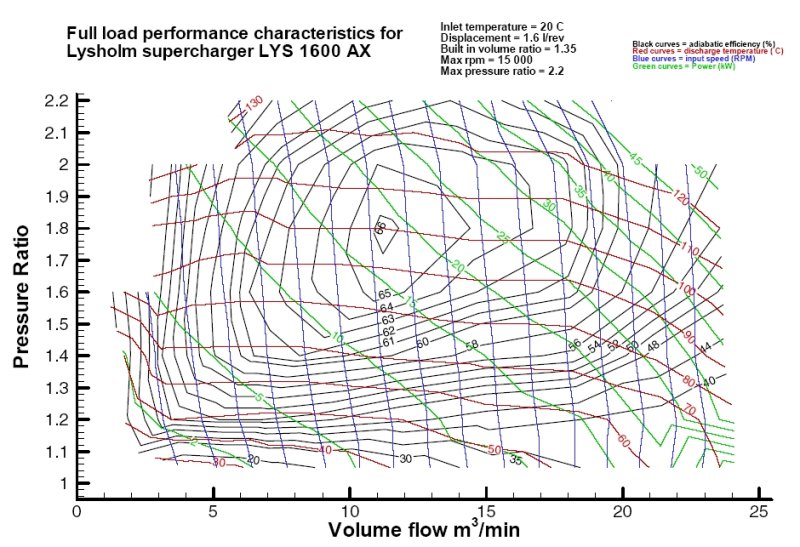FI Discussion Thread for the Boost Atheists
#326
#328
The MAF is good out to 425 g/sec in the OE tube diameter.
So, yes, I will run out of MAF soon.
I'm actually running out of PCM resolution even faster.
I've exceeded AbsLOAD of 2.00 and That is where I setup my limit!
I'm starting to see AbsLOADs around 2.05
#329
This thread hasn't been bumped in a while.
I was running some logs tonight, looking to smooth the transitions and see the effect of electronically "deleting" the VDI.
Still needs work, but it is essentially a good thing.
Now I need to work on the APV transition.
I know there are folks in one of the "other", more dogmatic threads that are particularly proud of their 330 g/sec MAF datalogs on a car that is producing 330 HP.
Note the peak MAF of 396 g/sec above.
There is actually quite a bit of the power range where the AbsLOAD is over 2.0 and stays there.
This is at 10 PSI, BTW with no belt-driven losses so airflow is airflow.
I was running some logs tonight, looking to smooth the transitions and see the effect of electronically "deleting" the VDI.
Still needs work, but it is essentially a good thing.
Now I need to work on the APV transition.
I know there are folks in one of the "other", more dogmatic threads that are particularly proud of their 330 g/sec MAF datalogs on a car that is producing 330 HP.
Note the peak MAF of 396 g/sec above.
There is actually quite a bit of the power range where the AbsLOAD is over 2.0 and stays there.
This is at 10 PSI, BTW with no belt-driven losses so airflow is airflow.
#331
I made no assumptions about the proper MAF for the 330 Pettit dyno. In fact, I asked for those flow numbers and it was indicated that the MAF for the dyno run does no correspond to the MAF measurement posted some days afterward.
For the purpose of the comparison below, I will assume that the MAF for the 330 HP dyno plot was the same as mine at approximately 390 g/sec and a Pr of 1.7.
Just some quick maths:
1 g/sec = 0.1323 lb/min
1 CFM@60°F = 0.0765 lb
1 HP = ~1.55 CFM@60°F
1 CFM@60°F = 0.0283 m^3@15°C
So,
390 g/sec = 51.6 lb/min = 674.5 CFM@60°F = ~435 HP
furthermore,
674.5 CFM@60°F = 19 m^3@15°C
as per the flow diagram below, a Pr of 1.7 (approx 11 PSI) flowing 19 m^3@15°C requires ~30 HP at the crank to drive the blower.
Assume what you will about drivetrain loss.
However, if you use 17% (which is a typical number thrown around for such purposes), you will come up with a number that corresponds to the aforementioned Pettit SC dyno plot.
Remember: The loss caused incurred by a turbo shows up immediately as a reduction in net airflow - there is nothing to calculate as its requirements are already deducted from the measured mass.
A belt-driven supercharger incurs its losses on the crankshaft, so its drive requirements are subtracted from the gross engine output.

For the purpose of the comparison below, I will assume that the MAF for the 330 HP dyno plot was the same as mine at approximately 390 g/sec and a Pr of 1.7.
Just some quick maths:
1 g/sec = 0.1323 lb/min
1 CFM@60°F = 0.0765 lb
1 HP = ~1.55 CFM@60°F
1 CFM@60°F = 0.0283 m^3@15°C
So,
390 g/sec = 51.6 lb/min = 674.5 CFM@60°F = ~435 HP
furthermore,
674.5 CFM@60°F = 19 m^3@15°C
as per the flow diagram below, a Pr of 1.7 (approx 11 PSI) flowing 19 m^3@15°C requires ~30 HP at the crank to drive the blower.
Assume what you will about drivetrain loss.
However, if you use 17% (which is a typical number thrown around for such purposes), you will come up with a number that corresponds to the aforementioned Pettit SC dyno plot.
Remember: The loss caused incurred by a turbo shows up immediately as a reduction in net airflow - there is nothing to calculate as its requirements are already deducted from the measured mass.
A belt-driven supercharger incurs its losses on the crankshaft, so its drive requirements are subtracted from the gross engine output.

Last edited by MazdaManiac; 01-08-2009 at 07:38 PM.
#332
Also:
I managed to get the boost controller to provide a stable 12 PSI and produced this log:

404 g/sec at an AbsLOAD of 2.05.
Ambient conditions are the same.
Fuel is finally looking smoother in 2nd. 3rd needs to be just a touch leaner.
I'll push another pound through it.
Mind you, I've done over 16 PSI on race gas. I'm looking for power on street fuel now.
I managed to get the boost controller to provide a stable 12 PSI and produced this log:

404 g/sec at an AbsLOAD of 2.05.
Ambient conditions are the same.
Fuel is finally looking smoother in 2nd. 3rd needs to be just a touch leaner.
I'll push another pound through it.
Mind you, I've done over 16 PSI on race gas. I'm looking for power on street fuel now.
Last edited by MazdaManiac; 01-08-2009 at 07:39 PM.
#334
#336
It also changes at different RPMs. It might be 5% at 3000 RPM and 20% at 9000.
17% as a static number is "fair", but highly problematic.
It just happens to work in the example shown.
Thread
Thread Starter
Forum
Replies
Last Post






